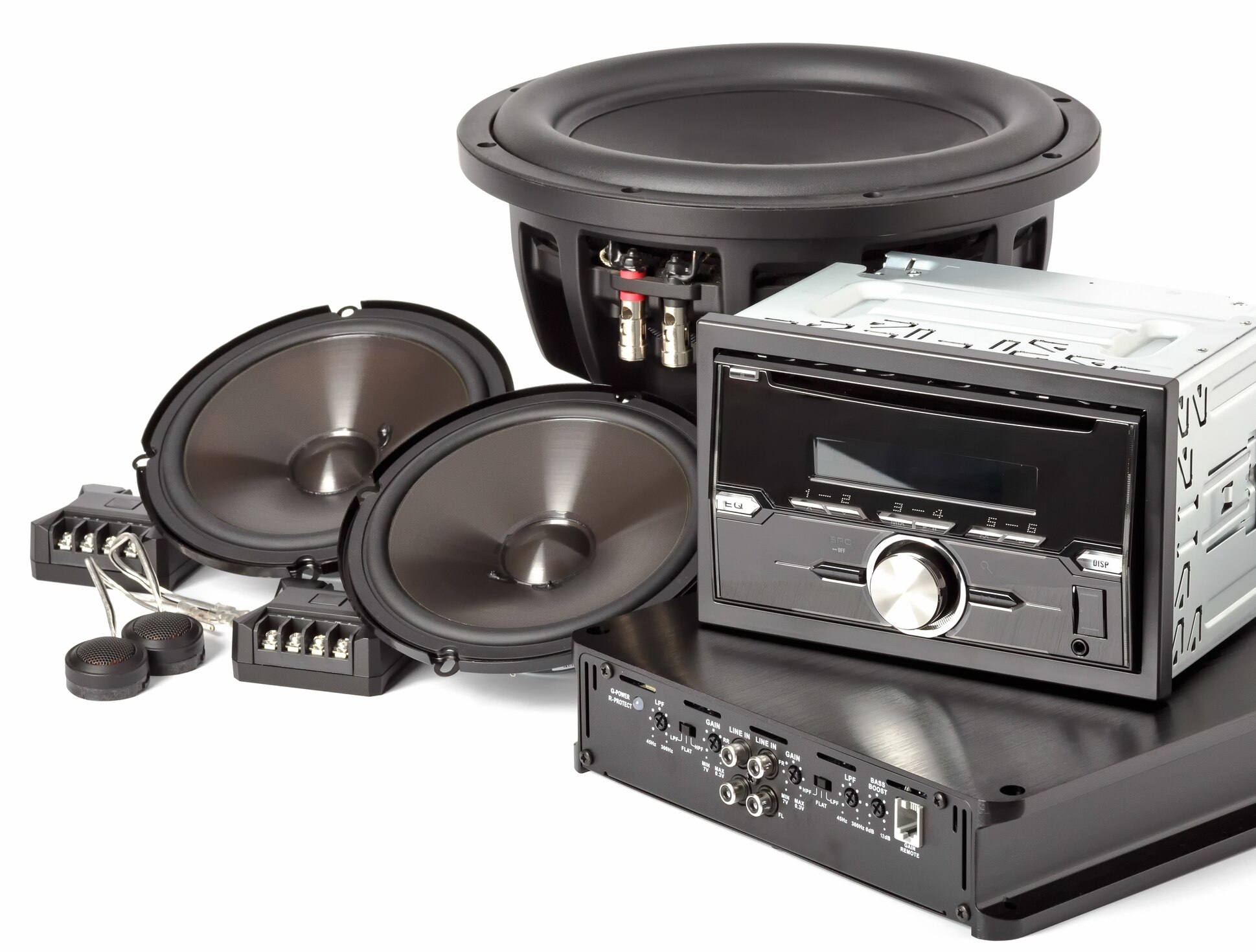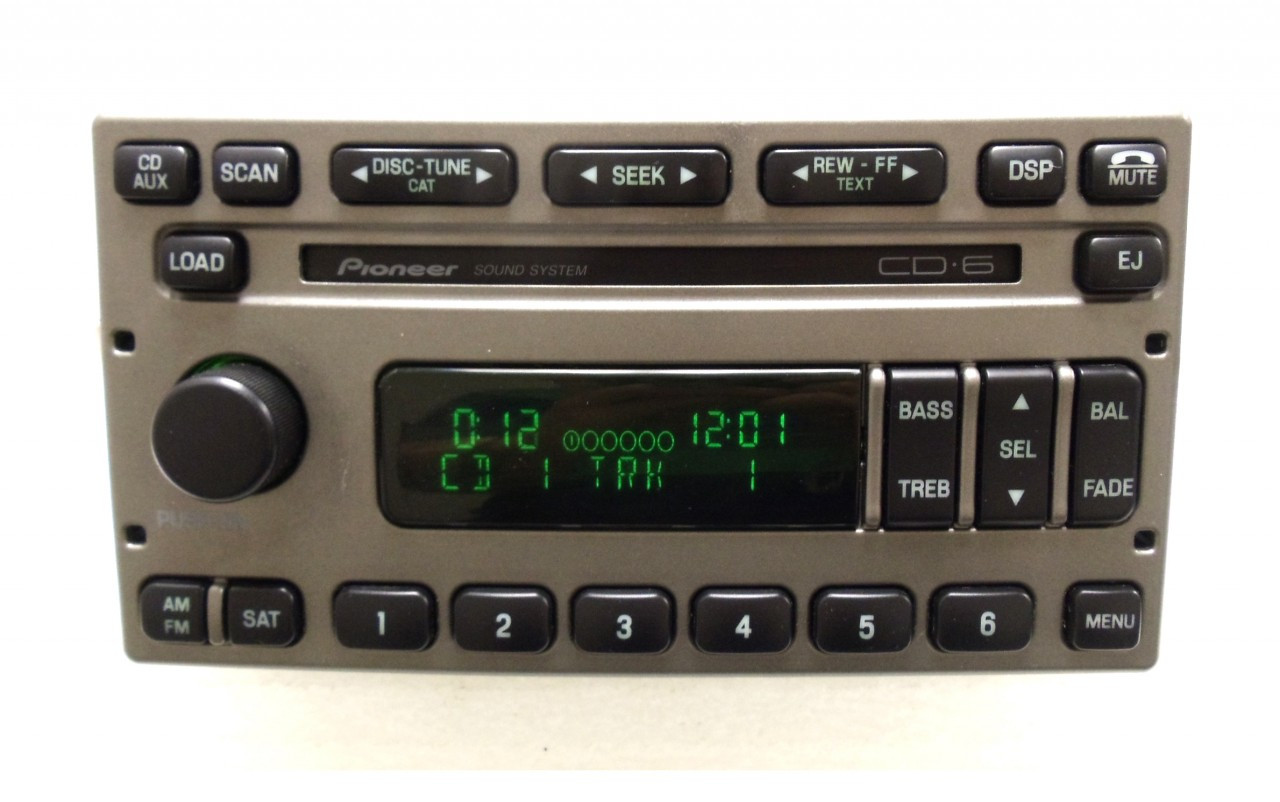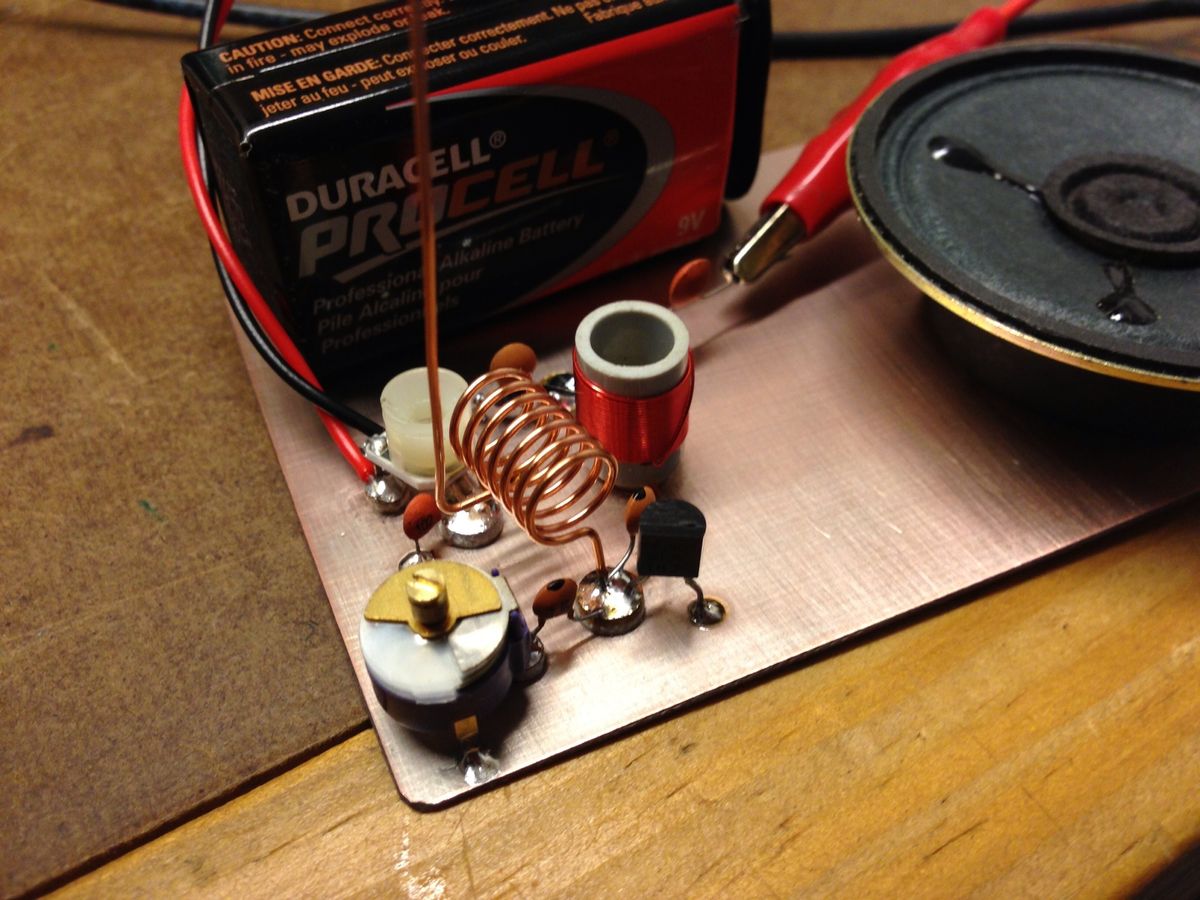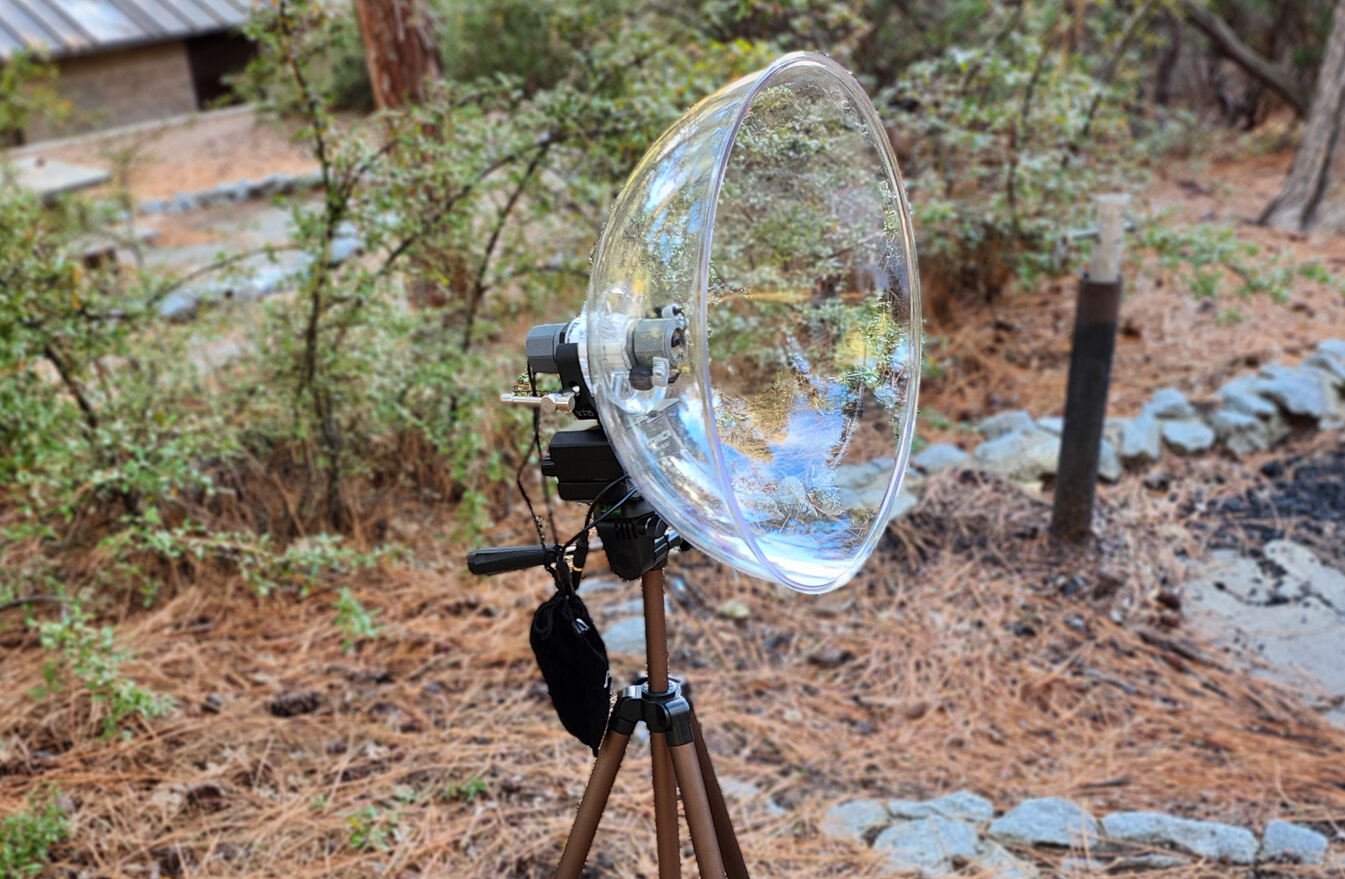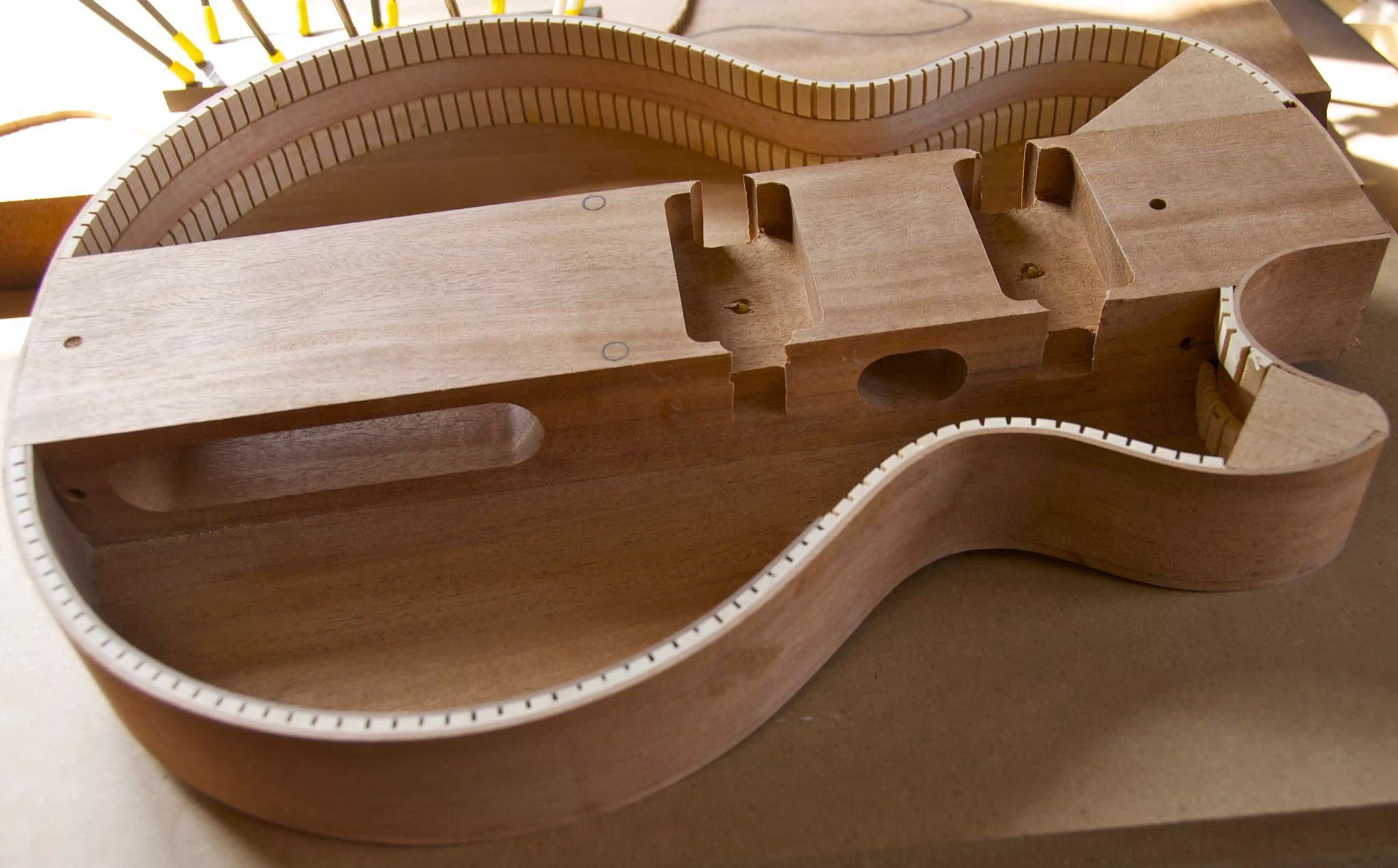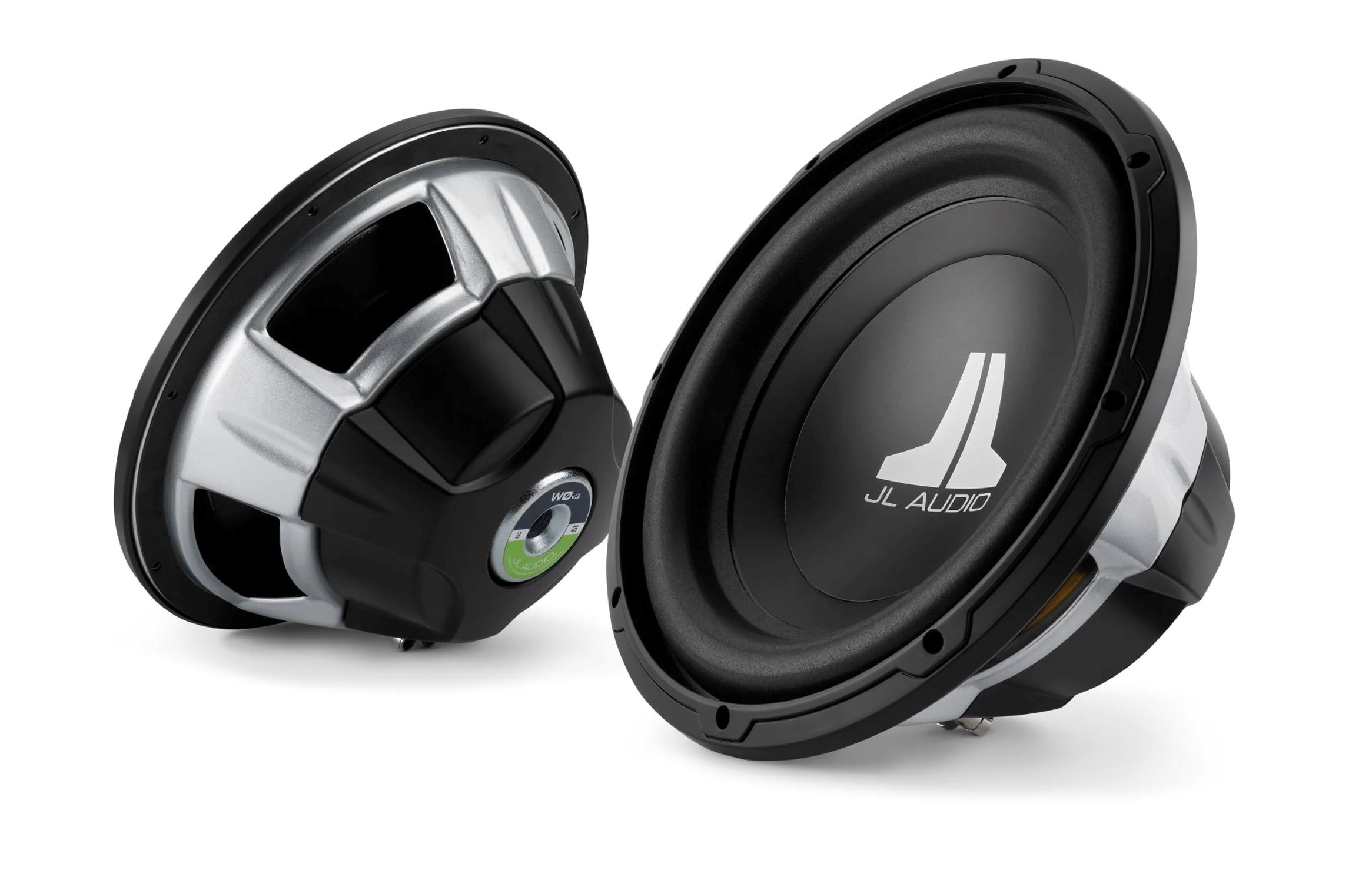Home>Production & Technology>Audiophile>How To Build An Audiophile System
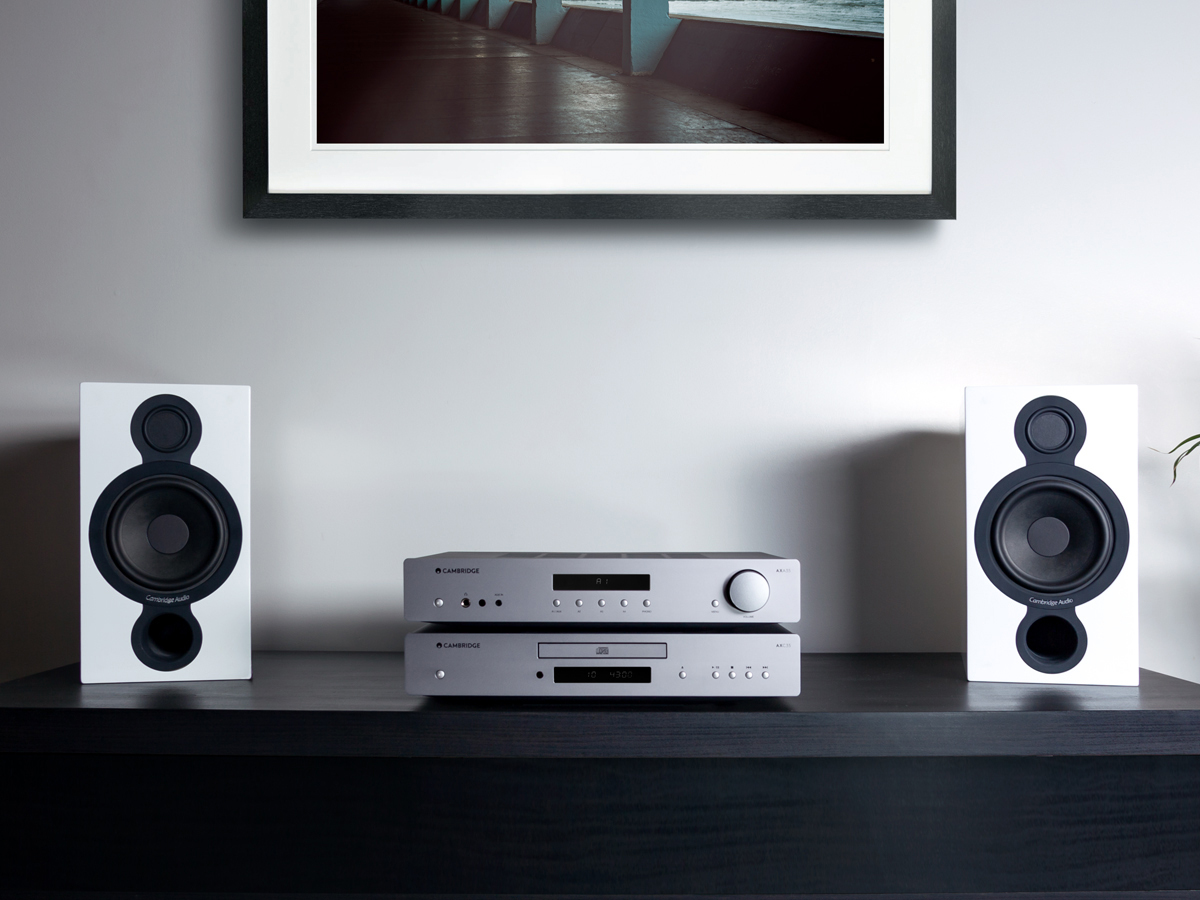

Audiophile
How To Build An Audiophile System
Modified: February 18, 2024
Learn how to build an exceptional audiophile system with our comprehensive guide. Explore the world of high-fidelity audio and elevate your listening experience.
(Many of the links in this article redirect to a specific reviewed product. Your purchase of these products through affiliate links helps to generate commission for AudioLover.com, at no extra cost. Learn more)
Table of Contents
Introduction
Welcome to the world of audiophiles, where the pursuit of high-quality audio reproduction is a passion and an art form. If you are searching for a truly immersive and exceptional audio experience, building your own audiophile system is the way to go. Whether you are a music enthusiast, a cinephile, or simply appreciate the finer details of audio, an audiophile system allows you to enjoy your favorite content with unparalleled clarity, depth, and precision.
Building an audiophile system may seem like a daunting task, but fear not! This comprehensive guide will walk you through the process, helping you navigate the world of audio components, terminology, and set-up techniques to create a system that suits your specific needs and preferences.
Before we dive into the details, it’s important to understand what makes an audiophile system different from your average audio setup. An audiophile system focuses on reproducing sound as faithfully and accurately as possible, capturing the nuances and subtleties of the original recording. The goal is to create an immersive listening experience that allows you to hear every instrument, vocal, and sound effect with exceptional clarity and detail.
One of the key factors in building an audiophile system is the careful selection of high-quality components. From speakers to amplifiers, digital-to-analog converters (DACs) to audio sources, every element plays a crucial role in achieving superior audio performance.
In the following sections, we will explore the different components that make up an audiophile system, delve into their features and considerations, and provide tips and insights to aid you in building your own exceptional audio setup. So, let’s get started on this exciting journey to create a truly immersive audiophile experience!
Choosing the Right Components
When it comes to building an audiophile system, choosing the right components is crucial. Each component in the chain will have an impact on the overall sound quality and performance of your system. Let’s take a closer look at the key components to consider:
- Speakers: The speakers are the heart and soul of your audiophile system. They are responsible for producing the sound that you hear. When selecting speakers, consider factors such as the type (bookshelf, floor-standing, or in-wall), driver technology, frequency response, and power handling capabilities. It’s also important to audition speakers whenever possible to determine which ones match your preferred sound signature.
- Amplifiers and Receivers: The amplifier or receiver is responsible for powering your speakers and driving them to produce sound. Look for an amplifier with enough power to match the requirements of your speakers. Class A, Class AB, and Class D amplifiers offer different sonic characteristics, so consider your preferences when making a choice. Receiver options with built-in preamps, DACs, and streaming capabilities can also enhance the functionality of your audiophile system.
- DACs and Audio Sources: Digital-to-analog converters (DACs) play a crucial role in converting digital audio signals into analog signals that can be amplified by your system. Look for DACs with high-resolution capabilities, multiple inputs, and support for different file formats. Additionally, consider your audio sources – whether it’s a CD player, turntable, streaming device, or computer – and ensure compatibility with your chosen components.
- Cables and Interconnects: Cables and interconnects may seem like minor components, but they can have a significant impact on sound quality. Choose cables with appropriate shielding, low-resistance conductors, and high-quality connectors to minimize signal degradation and interference. Pro-tip: While it’s important to invest in good quality cables, avoid falling into the trap of excessively expensive “audiophile” cables that offer marginal sonic improvements.
When choosing components, it’s essential to consider your budget and personal preferences. Research, read reviews, and listen to different setups whenever possible to make an informed decision. Remember, what works for one person may not work for another, as sound is subjective and can vary based on individual tastes.
By carefully selecting each component to suit your preferences and budget, you can create an audiophile system that delivers exceptional sound quality and an immersive listening experience. Let’s move on to the next section and explore the world of high-quality speakers and their considerations.
Selecting High-Quality Speakers
When it comes to building an audiophile system, few components are as important as the speakers. As they are responsible for reproducing the sound you hear, choosing high-quality speakers can make all the difference in achieving an exceptional audio experience. Here are some key factors to consider when selecting speakers for your audiophile system:
- Speaker Types: There are various types of speakers to choose from, including bookshelf, floor-standing, in-wall, and in-ceiling speakers. Bookshelf speakers are compact and ideal for smaller rooms, while floor-standing speakers offer greater power and soundstage for larger spaces. In-wall and in-ceiling speakers are perfect for those looking for a discreet installation.
- Driver Technology: The driver technology used in speakers plays a significant role in their sound reproduction. Look for speakers with high-quality drivers such as woofers, midrange, and tweeters. Each driver is designed to handle specific frequency ranges, allowing for a balanced and accurate sound reproduction.
- Frequency Response: The frequency response of a speaker refers to the range of frequencies it can accurately reproduce. Look for speakers with a wide frequency response to ensure that every detail in the audio spectrum is faithfully reproduced. A broader frequency response range typically results in more realistic and immersive sound reproduction.
- Sensitivity and Power Handling: Speaker sensitivity is a measure of how efficiently they convert input power into sound. Higher sensitivity speakers require less power to produce the same volume, making them ideal for pairing with lower-powered amplifiers. On the other hand, power handling determines the maximum power the speakers can handle without distortion or damage. Ensure that the power requirements of your speakers match your amplifier’s capabilities for optimal performance.
- Listening Room Size and Acoustics: Consider the size and acoustics of your listening room when selecting speakers. Larger rooms may benefit from floor-standing speakers with greater power and output, while smaller rooms may utilize bookshelf speakers more effectively. Additionally, take into account the room’s acoustics, as factors like wall materials, furniture placement, and room dimensions can impact sound quality. Consider using room treatments such as acoustic panels or bass traps to enhance the listening experience.
Ultimately, the best way to select speakers for your audiophile system is to audition them. Visit audio stores or attend audio shows where you can listen to different speaker models in person. This will allow you to make a more informed decision based on your personal preferences and the specific sound characteristics you are looking for.
Remember, building an audiophile system is about the pursuit of audio perfection. Take your time to research, listen, and find speakers that resonate with you. In the next section, we will explore amplifiers and receivers, which are equally important in driving and powering your chosen speakers.
Understanding Amplifiers and Receivers
Amplifiers and receivers are essential components of an audiophile system, serving the purpose of powering and driving your speakers to produce sound. Understanding the differences between amplifiers and receivers is crucial when building your system. Let’s delve into the world of amplifiers and receivers and explore their key features:
Amplifiers: Amplifiers are dedicated audio devices designed to provide power to your speakers. They amplify the audio signal coming from the sources, such as DACs or preamps, to a level that can drive the speakers. Amplifiers are available in various classes, including Class A, Class AB, and Class D.
– Class A amplifiers are known for their low distortion and high-quality sound reproduction. However, they tend to consume more power and generate more heat.
– Class AB amplifiers combine the best of both Class A and Class B amplifiers, delivering a balance between audio quality and power efficiency. They are the most common type of amplifiers used in audio systems.
– Class D amplifiers, also known as digital amplifiers, use digital switching techniques to amplify the audio signal. They are highly efficient and generate less heat, making them suitable for compact or power-efficient setups.
When choosing an amplifier, consider factors such as power output, impedance matching with your speakers, and the type of connectivity options available. It’s crucial to match the power output of your amplifier with the power-handling capabilities of your speakers for optimal performance and to prevent damage.
Receivers: Receivers combine an amplifier with a tuner and often include additional features such as preamp outputs, DACs, and streaming capabilities. They serve as a central hub for your audio system, allowing you to connect various sources like CD players, turntables, and media streamers.
Receivers come in two types: stereo and surround sound. Stereo receivers focus on providing high-quality audio in a two-channel setup, ideal for music listening. Surround sound receivers, on the other hand, are designed to deliver immersive sound for home theater setups, supporting multiple speakers and audio formats like Dolby Atmos and DTS:X.
When selecting a receiver, consider its power output, connectivity options, and the features that best suit your needs. Look for receivers with high-quality DACs for superior digital audio conversion, ample connectivity options including HDMI, and support for the audio formats you plan to use.
Remember that the quality of the amplifier or receiver can significantly impact the overall sound quality of your audiophile system. Take the time to research and audition different models to find the one that meets your performance expectations and budget.
In the next section, we will explore the role of DACs and audio sources in your audiophile system, as they play a vital role in converting and delivering high-quality audio signals.
Exploring DACs and Audio Sources
Digital-to-analog converters (DACs) and audio sources are crucial components in any audiophile system. DACs convert digital audio signals into analog signals that can be amplified and played through your speakers. Audio sources, on the other hand, provide the content that your system will reproduce. Let’s dive into the world of DACs and audio sources and explore their significance:
DACs: DACs are responsible for converting the digital audio signals from various sources into analog signals. The quality of the DAC can greatly impact the overall sound quality of your system. Here are some key considerations when exploring DACs:
- Resolution: Higher-resolution DACs provide better accuracy and detail in reproducing the audio signal. Look for DACs that support a wide range of bit depths and sample rates to ensure compatibility with various audio formats.
- Inputs and Connectivity: DACs come with different input options such as USB, optical, coaxial, and even wireless connections like Bluetooth and Wi-Fi. Consider the types of audio sources you plan to use and ensure that your chosen DAC has the necessary inputs to connect them.
- Signal-to-Noise Ratio (SNR): The SNR measures the level of noise present in the audio signal compared to the desired audio content. Higher SNR values indicate better clarity and less noise. Look for DACs with high SNR ratings to ensure clean and accurate audio reproduction.
- Build Quality and Components: The build quality and internal components of a DAC can also influence its performance. Look for well-built DACs with high-quality components, as they are more likely to provide better sound quality and longevity.
When selecting a DAC, it’s important to consider your budget, the types of audio files you’ll be playing, and your listening preferences. Auditioning different DACs with your preferred sources and speakers can help you make an informed decision based on the sound quality and compatibility.
Audio Sources: Audio sources provide the content that your audiophile system will reproduce. Here are some common audio sources to consider:
- CD Players: CD players offer a reliable and high-quality audio source. Look for players with good built-in DACs and the ability to play various audio formats.
- Turntables: Vinyl records have seen a resurgence in popularity, and turntables provide a warm and rich analog audio experience. Consider turntables with high-quality cartridges for the best sound reproduction.
- Streaming Devices: Streaming devices allow you to access digital music libraries, online streaming services, and internet radio. Look for devices with high-quality DACs, support for various streaming platforms, and connectivity options that suit your preferences.
- Computers and Media Servers: Many audiophiles use computers or dedicated media servers to store and play their digital audio files. Consider using high-quality music software and connecting your computer or server to a capable DAC for optimal sound quality.
When selecting audio sources, consider the formats and quality of your music collection, as well as your preferred method of accessing and playing audio content. Remember that the quality of the audio source can impact the final sound reproduction, so choose sources that meet your standards and preferences.
In the next section, we will discuss the importance of cables and interconnects, which play a critical role in maintaining signal integrity and delivering the best possible audio experience.
Cables and Interconnects: What to Consider
While often overlooked, cables and interconnects play a vital role in any audiophile system. They are responsible for carrying the audio signals from one component to another, and the quality of these cables can have a noticeable impact on sound quality. Here are some factors to consider when choosing cables and interconnects for your system:
- Signal Integrity: The primary purpose of cables and interconnects is to maintain the integrity of the audio signal. Look for cables with good shielding to minimize electromagnetic interference (EMI) and ensure clean transmission of the signal from source to destination. High-quality cables will have proper insulation and construction to mitigate signal degradation.
- Connectors: Connectors play a crucial role in establishing a solid and reliable connection between components. Look for cables with high-quality connectors that provide a secure fit and minimize signal loss. Common connector types include RCA, XLR, and banana plugs. Ensure that the connectors are compatible with the input and output jacks of your components.
- Cable Length: Consider the length of the cables required for your setup. Excessively long cables can introduce signal loss and degrade audio quality, especially for analog signals. Measure and plan your cable lengths accordingly to minimize the potential for signal degradation.
- Wire Gauge and Material: The gauge of a cable refers to its thickness, with lower gauge numbers indicating thicker wires. Thicker cables can provide better conductivity and lower resistance, resulting in a cleaner audio signal. Copper is a prevalent material for audio cables due to its excellent conductivity properties. Some cables may also use higher-quality materials like silver, which can offer enhanced audio performance but at a higher cost.
- Price and Value: Cables can vary significantly in price, and it’s essential to find the right balance between quality and value. While there are boutique cables that claim improved sound quality, it’s important to consider the actual benefits they offer compared to their cost. In most cases, high-quality cables from reputable brands provide excellent performance without breaking the bank.
Remember that while cables and interconnects are crucial, they should not be the sole focus of your budget or attention. Investing in good quality cables is important, but the improvements may not be as significant as upgrading other components in your system.
It’s also worth noting that there’s often a lot of debate and subjective opinions when it comes to cables in the audiophile community. What matters most is finding cables that meet your specific needs and preferences within your budget. If possible, try auditioning different cables and interconnects with your system to hear any differences for yourself.
In the following sections, we will discuss speaker placement and room acoustics, as they play a vital role in ensuring optimal sound quality and performance in your audiophile system.
Speaker Placement and Room Acoustics
Speaker placement and room acoustics play a crucial role in maximizing the sound quality and performance of your audiophile system. Regardless of how high-end your speakers are, if they are not properly placed and your room is not acoustically optimized, you may not fully experience their potential. Let’s explore some key considerations for speaker placement and room acoustics:
- Symmetrical Placement: For stereo setups, try to achieve symmetrical placement of the speakers in relation to the listening area. This helps in creating a balanced and cohesive soundstage. Ideally, the speakers should be equidistant from the sidewalls and positioned at an equal distance from the listening position.
- Toe-in and Angling: Experiment with toe-in and angling of the speakers to optimize the soundstage and imaging. Slight toe-in can help focus the sound towards the listening position, while angling the speakers inward can enhance the stereo imaging and create a wider soundstage.
- Distance from Walls: The distance between your speakers and the walls can impact the bass response and overall sound quality. Generally, placing the speakers a few feet away from the walls can help reduce bass build-up and provide a more balanced sound. However, the exact distance may vary depending on the size and characteristics of your room.
- Room Treatment: Consider implementing room treatment to improve the acoustics of your listening space. Acoustic panels, bass traps, diffusers, and sound-absorbing materials can help reduce unwanted reflections, echoes, and standing waves. Strategic placement of these treatments can result in a more accurate and controlled sound reproduction.
- Furniture and Room Layout: Choose and arrange furniture in a way that minimizes sound reflections and standing waves. Avoid large reflective surfaces opposite the speakers and consider using rugs, curtains, bookshelves, or other materials to help diffuse and absorb sound reflections. Experimentation with different furniture layouts can lead to better sonic performance.
Room acoustics can greatly impact the sound quality of your system. Keep in mind that achieving perfect room acoustics is often challenging, and it may require trial and error to find the best setup for your specific room. Consider seeking professional help or consulting with experienced audiophiles to optimize your room’s acoustics.
It’s also important to note that speaker placement may vary depending on the type and design of your speakers, room size, and personal preferences. Don’t be afraid to experiment and trust your ears to find the sweet spot that works best for you.
In the next section, we will discuss the importance of tuning your audiophile system to further enhance its performance and achieve the desired sound signature.
Tuning Your Audiophile System
Tuning your audiophile system is an essential step in achieving optimal sound quality and realizing the full potential of your components. Fine-tuning allows you to tailor the sound to your personal preferences and the characteristics of your listening space. Here are some key considerations when tuning your audiophile system:
- Room Correction: Consider using room correction software or digital signal processors (DSP) to optimize the sound in your room. These tools analyze the acoustic characteristics of your room and make adjustments to the frequency response to minimize room-induced resonances and improve overall sound quality.
- Equalization (EQ): EQ allows you to adjust the frequency response of your system to compensate for any irregularities or deficiencies in your speakers or room. Use a parametric or graphic equalizer to boost or cut specific frequencies and achieve a more balanced and accurate sound reproduction.
- Subwoofer Integration: If using a subwoofer or multiple subwoofers, careful integration is necessary to ensure a seamless blend with your main speakers. Adjust the crossover frequency and phase alignment between the subwoofer(s) and main speakers to achieve optimal integration and a cohesive low-frequency response.
- Speaker Positioning Adjustments: Fine-tune the position and angle of your speakers to optimize imaging and soundstage. Small adjustments can have a significant impact on the clarity, focus, and depth of the sound. Take the time to experiment with different speaker positioning to find the sweet spot that delivers the best result.
- Volume Level: Adjust the volume level to a comfortable listening level that suits your preferences while retaining dynamic range. Be mindful not to listen at excessive levels, as it can strain your ears and potentially damage your speakers. Take breaks and give your ears a chance to rest.
It’s important to approach the tuning process with patience and an open mind. Trust your ears and make incremental adjustments while critically listening to your favorite music or audio content. Take note of any changes and evaluate their impact on your overall listening experience.
Additionally, consider utilizing high-quality recordings known for their audio fidelity. Well-engineered and mastered recordings can showcase the capabilities of your system, allowing you to better appreciate its performance and potential.
Remember that tuning is a continuous process. As your listening environment, equipment, or personal preferences change, you may need to reevaluate and adjust your system accordingly. Regularly revisit the tuning process to ensure your audiophile system continues to deliver the best possible sound quality.
In the final section, we will discuss the importance of maintaining and upgrading your audiophile system over time to keep it performing at its best.
Maintaining and Upgrading Your System
Maintaining and upgrading your audiophile system is essential for keeping it in optimal condition and taking advantage of advancements in technology. Here are some guidelines for maintaining and upgrading your system:
- Clean and Dust Regularly: Dust can accumulate on your components, affecting their performance and longevity. Regularly clean your system using a soft, lint-free cloth to remove dust and debris. Be gentle and avoid using harsh chemicals or abrasive materials that can damage the surfaces. Pay special attention to vents and cooling fans to prevent overheating.
- Proper Ventilation: Ensure that your components have adequate ventilation to prevent overheating. Avoid placing them in enclosed spaces or stacking them too closely. Provide sufficient space for airflow and consider using cooling aids like fans or heat sinks if needed.
- Software and Firmware Updates: Keep your devices up to date by regularly checking for software and firmware updates. Manufacturers often release updates that include bug fixes, performance improvements, and new features. Stay current to ensure you are getting the best performance and functionality from your components.
- Speaker Maintenance: Check your speakers periodically for loose connections, damaged cables, or any signs of wear. Clean the speaker drivers gently with a microfiber cloth and avoid using harsh substances that may damage the drivers. If you notice any issues with your speakers, consult the manufacturer or an authorized service center for assistance.
- Upgrading Components: Over time, you may consider upgrading certain components of your audiophile system to enhance its performance. Research and stay informed about the latest advancements in technology, as well as user and professional reviews of new components. Consider upgrading components such as amplifiers, DACs, or speakers if they no longer meet your requirements or if newer models offer significant improvements in sound quality.
- System Calibration: Periodically recalibrate your system to ensure optimal performance. This includes recalibrating your speakers using tools like room correction software or engaging a professional calibration service. Recalibration can help compensate for changes in your listening environment and keep your system performing at its best.
As you upgrade or replace components, consider factors such as compatibility, synergy with your existing system, and your budget. It’s important to strike a balance between investing in new technology and enjoying the improvements it brings without falling into the trap of constant upgrading for the sake of it.
Lastly, enjoy the journey of exploring new equipment and the enhanced audio experiences that come with it. Continually learning about the advancements in audio technology and experimenting with different components can be a rewarding and enjoyable part of being an audiophile.
Now that you have a solid understanding of maintaining and upgrading your system, let’s conclude this guide and encourage you to continue exploring and refining your audiophile setup.
Conclusion
Congratulations on embarking on the journey of building your own audiophile system! By now, you have gained insight into the key components that make up an audiophile system, such as speakers, amplifiers, DACs, and audio sources. You have learned about the importance of cables, interconnects, speaker placement, and room acoustics in maximizing sound quality. Additionally, you now understand the significance of tuning, maintaining, and upgrading your system to keep it performing at its best.
Remember, building an audiophile system is a personal and subjective endeavor. Each individual’s preferences and priorities may differ, and the pursuit of sonic perfection is a continual process. Trust your ears, take the time to audition different components, and make informed decisions based on your unique listening experience and budget.
Whether you are an avid music lover, a movie enthusiast, or simply someone who appreciates high-quality audio, your audiophile system can bring you closer to a more immersive and exquisite audio experience. So sit back, relax, and enjoy the captivating soundscapes that your system will create.
Lastly, keep in mind that the world of audio technology is ever-evolving. New advancements and innovations continuously push the boundaries of what is possible in audio reproduction. Stay curious, stay informed, and continue to explore and refine your audiophile system to ensure you are always on the cutting edge of audio performance.
With this comprehensive guide, you are well-equipped to embark on your audiophile journey with confidence. Happy listening!


